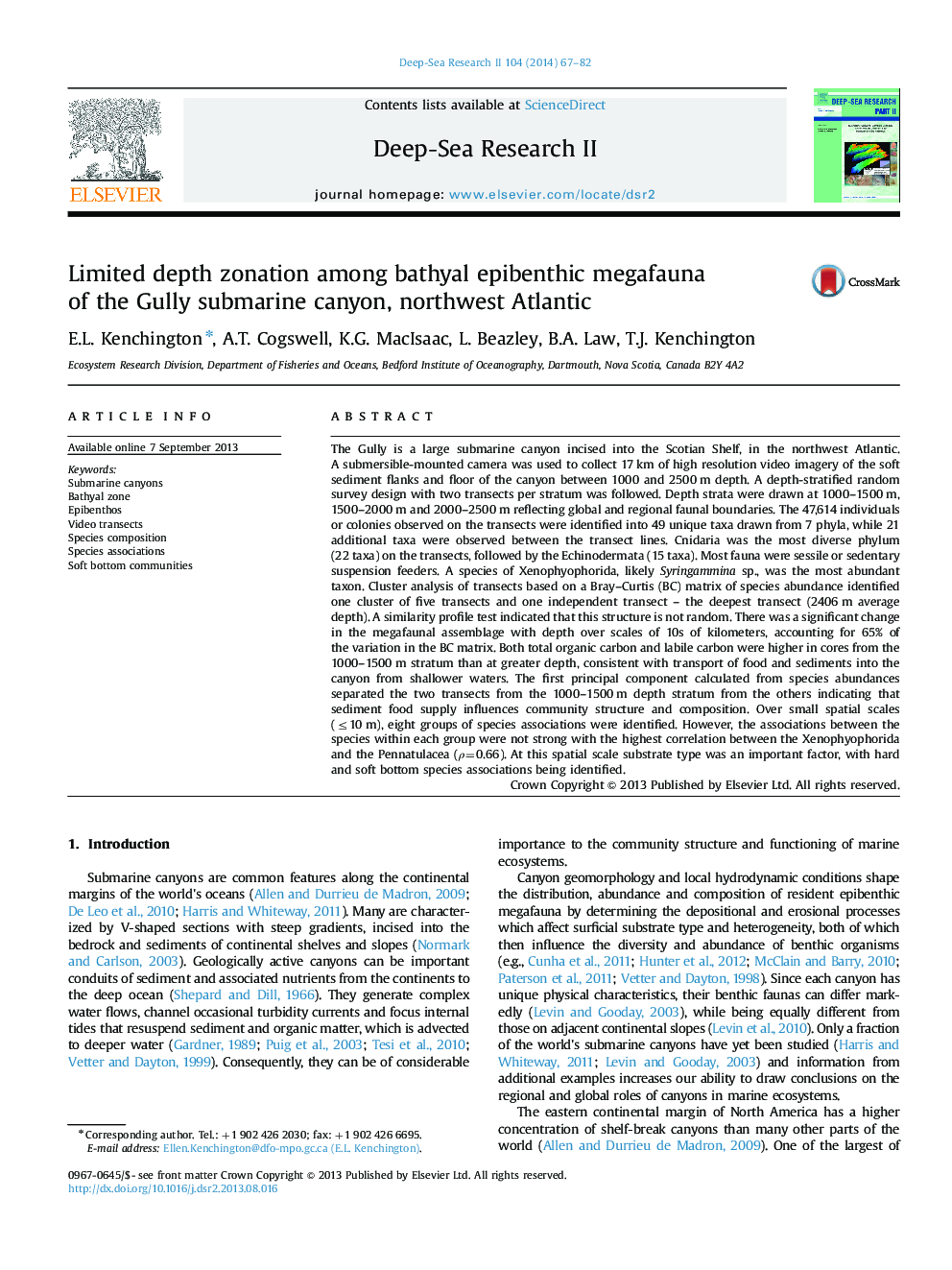| کد مقاله | کد نشریه | سال انتشار | مقاله انگلیسی | نسخه تمام متن |
|---|---|---|---|---|
| 4536386 | 1626436 | 2014 | 16 صفحه PDF | دانلود رایگان |

The Gully is a large submarine canyon incised into the Scotian Shelf, in the northwest Atlantic. A submersible-mounted camera was used to collect 17 km of high resolution video imagery of the soft sediment flanks and floor of the canyon between 1000 and 2500 m depth. A depth-stratified random survey design with two transects per stratum was followed. Depth strata were drawn at 1000–1500 m, 1500–2000 m and 2000–2500 m reflecting global and regional faunal boundaries. The 47,614 individuals or colonies observed on the transects were identified into 49 unique taxa drawn from 7 phyla, while 21 additional taxa were observed between the transect lines. Cnidaria was the most diverse phylum (22 taxa) on the transects, followed by the Echinodermata (15 taxa). Most fauna were sessile or sedentary suspension feeders. A species of Xenophyophorida, likely Syringammina sp., was the most abundant taxon. Cluster analysis of transects based on a Bray–Curtis (BC) matrix of species abundance identified one cluster of five transects and one independent transect – the deepest transect (2406 m average depth). A similarity profile test indicated that this structure is not random. There was a significant change in the megafaunal assemblage with depth over scales of 10s of kilometers, accounting for 65% of the variation in the BC matrix. Both total organic carbon and labile carbon were higher in cores from the 1000–1500 m stratum than at greater depth, consistent with transport of food and sediments into the canyon from shallower waters. The first principal component calculated from species abundances separated the two transects from the 1000–1500 m depth stratum from the others indicating that sediment food supply influences community structure and composition. Over small spatial scales (≤10 m), eight groups of species associations were identified. However, the associations between the species within each group were not strong with the highest correlation between the Xenophyophorida and the Pennatulacea (ρ=0.66). At this spatial scale substrate type was an important factor, with hard and soft bottom species associations being identified.
Journal: Deep Sea Research Part II: Topical Studies in Oceanography - Volume 104, June 2014, Pages 67–82